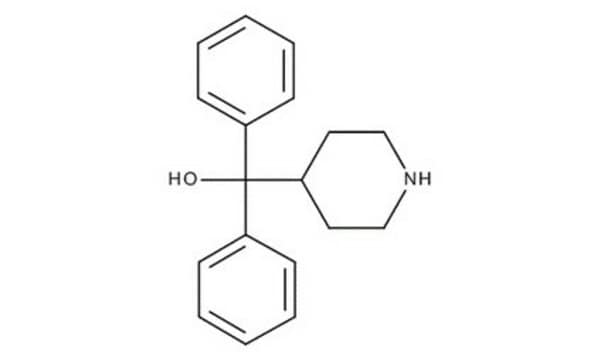32328
Retronecine
analytical standard
Synonyme(s) :
(1R,7aR)-2,3,5,7a-Tetrahydro-1-hydroxy-1H-pyrrolizine-7-methanol
About This Item
Produits recommandés
Qualité
analytical standard
Niveau de qualité
Durée de conservation
limited shelf life, expiry date on the label
Conditions de stockage
under inert gas
Technique(s)
HPLC: suitable
gas chromatography (GC): suitable
Format
neat
Température de stockage
2-8°C
Chaîne SMILES
[H][C@@]1([C@H](O)CC2)N2CC=C1CO
InChI
1S/C8H13NO2/c10-5-6-1-3-9-4-2-7(11)8(6)9/h1,7-8,10-11H,2-5H2/t7-,8-/m1/s1
Clé InChI
HJSJELVDQOXCHO-HTQZYQBOSA-N
Vous recherchez des produits similaires ? Visite Guide de comparaison des produits
Application
Mention d'avertissement
Danger
Mentions de danger
Conseils de prudence
Classification des risques
Acute Tox. 2 Dermal - Acute Tox. 2 Inhalation - Acute Tox. 2 Oral
Code de la classe de stockage
6.1A - Combustible acute toxic Cat. 1 and 2 / very toxic hazardous materials
Classe de danger pour l'eau (WGK)
WGK 3
Point d'éclair (°F)
Not applicable
Point d'éclair (°C)
Not applicable
Faites votre choix parmi les versions les plus récentes :
Certificats d'analyse (COA)
Vous ne trouvez pas la bonne version ?
Si vous avez besoin d'une version particulière, vous pouvez rechercher un certificat spécifique par le numéro de lot.
Déjà en possession de ce produit ?
Retrouvez la documentation relative aux produits que vous avez récemment achetés dans la Bibliothèque de documents.
Notre équipe de scientifiques dispose d'une expérience dans tous les secteurs de la recherche, notamment en sciences de la vie, science des matériaux, synthèse chimique, chromatographie, analyse et dans de nombreux autres domaines..
Contacter notre Service technique








